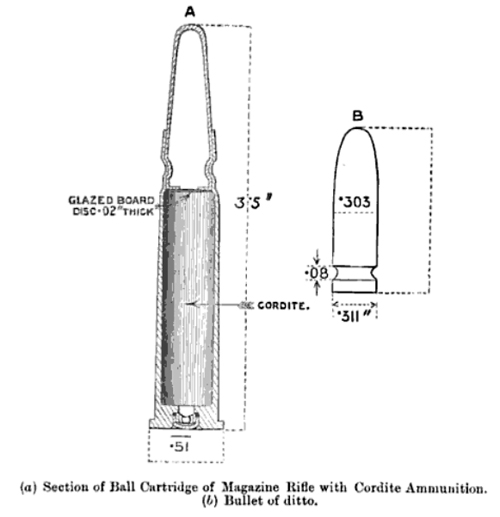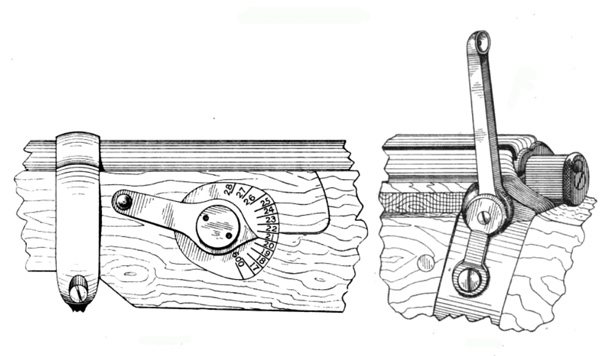The Lee Metford rifle replaced the Martini service rifle in 1888. The rifle was based on a design by James Paris Lee, and was developed in the British Isles in cooperation with the Royal Small Arms Factory in Enfield, since 1880. It featured his spring loaded, column fed magazine system, which is the basis for all rifle based magazine systems in modern use.

The first rifles accepted for trials were chambered for .45 gatling ammunition, and different calibers and types of ammunition and rifling were tried. The final version was a .303 caliber black powder round, with Metford style rifling, which was polygonal instead of lands and grooves. The round nose bullet was pushed at 1800 ft. per second and was almost immediately criticized for it's lack of knock down power. In fact, the pundits of the day said victims had no idea they were even hit!

Due to unforeseen manufacturing problems, the .303 was still using black powder, when the original design was to use a version of the new nitrocellulose powders being developed. This did lead to less stopping power than the old .450 round, but not so bad as the press would have you believe. The bullet went through various design changes, from using dum dum bullets to having lighter materials occupy the front part of the bullet, leading to tumbling in a body. Nothing really solved the problem till the Germans in 1905 led the way. A spitzer bullet (streamlined), pushed by nitrocellulose powders. The high velocity of the bullet more than made up for it's smaller diameter.
Finally the .303 was produced with Cordite, a version of nitrocellulose powder. This made the Lee Metford a killer finally, but the heat from the new powder eroded the throat of the barrel in short order. The original Metford rifling was used for black powder as this rifling tended to foul less, however, the barrels would wear out within 5000 rounds when the normal service life was 10,000 rounds, and this prompted Enfield to redesign the barrel with deeper lands and grooves. This led to acceptable barrel life and the rifle became the Lee Enfield.
Views of a Magazine Lee Enfield

The Lee Metford rifles were built at Enfield Lock at the Royal Small Arms Factory, and also by Birmingham Small Arms (BSA), and the London Small Arms Co. They were called Long Lee's later after the Short Magazine Lee Enfields (SMLE) came out, due to their 30 inch barrels. The stock was a 2 piece pistol grip type, with a cleaning rod under the barrel and a trap in the butt for the oiling bottle and cleaning supplies. There was a magazine cutoff, blocking the rounds in the magazine so the rifle could be used as a single shot. The Mk I magazines held 8 rounds, the MkII's held 10, a lot for the day, as most other guns in the world held 5. The magazine was chained to the rifle and a spare one carried.

Mk II's had the cleaning rod modified and it then became known as the clearing rod, and was used only as a device to knock out stuck cartridge cases. Cleaning of the rifle was accomplished with a pull through weight on a length of cord with a loop at the other end for a small cloth. The butt trap was enlarged for the extra cleaning gear. A sword type bayonet was used, and it was usually fitted to the rifle, as was the magazine, as mass production methods still weren't that good. Sights were set from 300 to 1,900 yards. Extreme range sights on the left side could be set from 1800 to 3500 yards. A carbine was manufactured from 1894, and with a shortened 20 inch barrel weighed 7 lbs and 7 oz. The Long Lee was discontinued in 1896.
The following video is from YouTube contributor Jollygreenslugg, check out his other Enfield videos...

